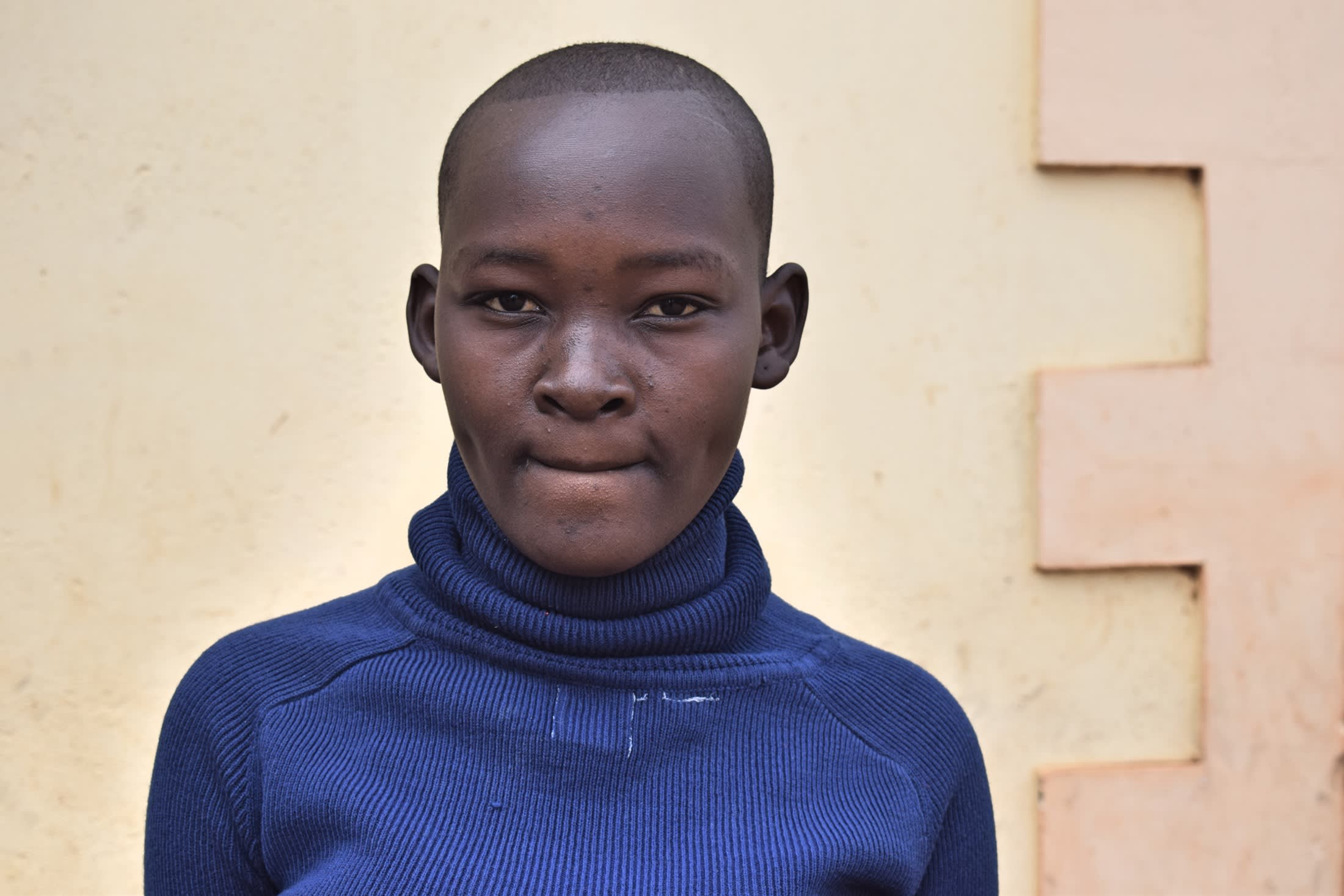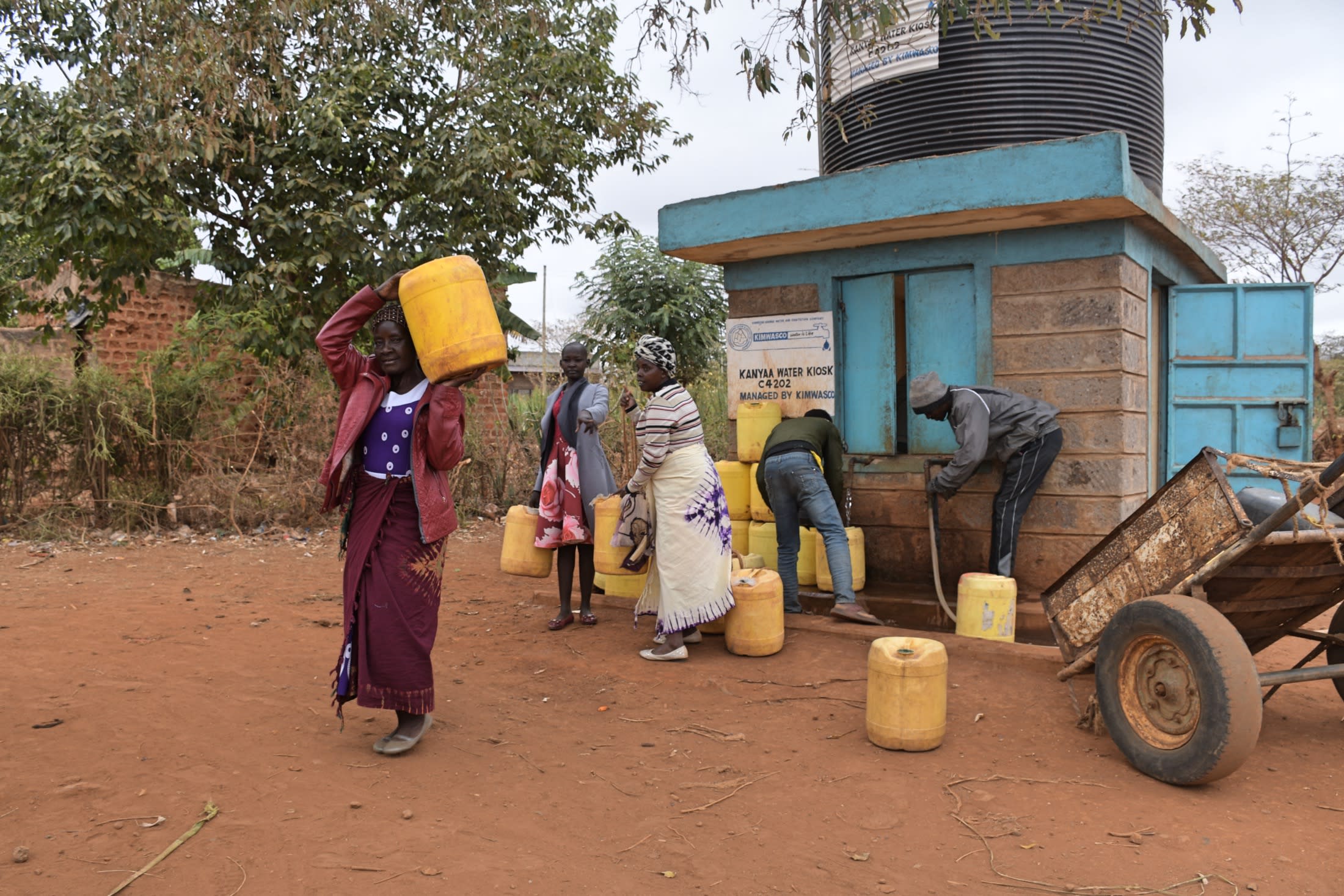In Kalimbui, children missing school is the norm, because women and children are the ones who fetch water, and fetching water is an all-day task due to the far distance and the long lines. But every household needs water, so all 520 people in Kalimbui must sacrifice to keep their families going.
"The distance [to the water point] is very long for me," said 16-year-old Francisca M (shown below). "I have been missing school regularly. Last moon, I prepared very early to go and fetch water. Little did I know that the queue [at] the kiosk had prolonged. I waited and waited for my turn. When finally I got the water, it was too late for me to think of going to school. I felt bad missing my dearest teachers and lessons."

For many families, the trip to fetch water takes hours. And what's worse is that the water kiosk from which they collect water is only open in the mornings. People must leave home before the sun rises to secure any water. Even then, they may end up waiting until the kiosk closes and returning home with empty containers. Households without their own donkey to carry multiple jerrycans must carry one 20-liter jerrycan at a time, which just isn't enough to serve a household even for a day.
"The water situation in my area gives me a headache," said 60-year-old farmer Josephine Mbiti, shown below carrying a full jerrycan away from the water kiosk. "How to get the water is a task too. I don't have a donkey, so I have to borrow [one] from my friends, who charge me two jerrycans of water. This hits me emotionally and financially. At times, when I don't get a borrowed donkey, I have to carry the water using my back. I am forced to buy water most of the time."

But buying water is a huge issue, too, since most people in this area are subsistence farmers. They can't spare adequate water to irrigate their crops. Thus, many crops wither and die before they're harvested because people can only stretch their precious water so far.
And, unfortunately, the kiosk's water is both salty and potentially hazardous, given that many people who drink the water unboiled end up with bloated stomachs. This may indicate that the water is infested with parasites. But fetching water on its own is difficult enough; gathering firewood, starting a fire, and waiting for the water to boil before it can be used expends energy and time that is already greatly reduced.
In a message to our field officers, one community representative explained the community's dreams for their future once they have water. "We can have more [water], such that we are able to engage in vegetable farming. We will also establish kitchen gardens and tree nurseries. Our children will no longer miss school to go and fetch water. We will also improve our hygiene and sanitation levels."
A new water source will do so much for the people of Kalimbui.
What We Can Do:
Our main entry point into the community is the Self-Help Group, which comprises households working together to address water and food scarcity in their region. These members will be our hands and feet in constructing water projects and spreading the message of good hygiene and sanitation to everyone.
Sand Dam
After the community picked the ideal spot, our technical team went in and proved the viability by finding a good foundation of bedrock. Now, our engineers are busy drawing up the blueprints.
We are unified with this community to address the water shortage. As more sand dams are built, the environment will continue to transform. As the sand dams mature and build up more sand, the water tables will rise. Along with this sand dam, a hand-dug well will be installed to give community members an easy, safe way to access that water.
Building this sand dam and the well in this community will help bring clean water closer to the many people living here.
Training
These community members currently do their best to practice good hygiene and sanitation, but their severe lack of water has significantly hindered reaching their fullest potential.
We will hold hygiene and sanitation training sessions with the Self-Help Group and other community members to teach essential hygiene practices and daily habits to establish at the personal, household, and community level. This training will help to ensure that participants have the knowledge they need to make the most out of their new water point as soon as the water is flowing.
One of the most important topics we plan to cover is handling, storage, and water treatment. Having a clean water source will be extremely helpful, but it is useless if water gets contaminated when it is consumed. We will also emphasize the importance of handwashing.
The community and we firmly believe that all of these components will work together to improve living standards here, which will help to unlock the potential for these community members to live better, healthier lives.
We typically work with self-help groups for 3 to 5 years on multiple water projects. We will conduct follow-up visits and refresher training during this period and remain in contact with the group after all of the projects are completed to support their efforts to improve sanitation and hygiene.





 Sand Dam
Sand Dam
 Rehabilitation Project
Rehabilitation Project


























